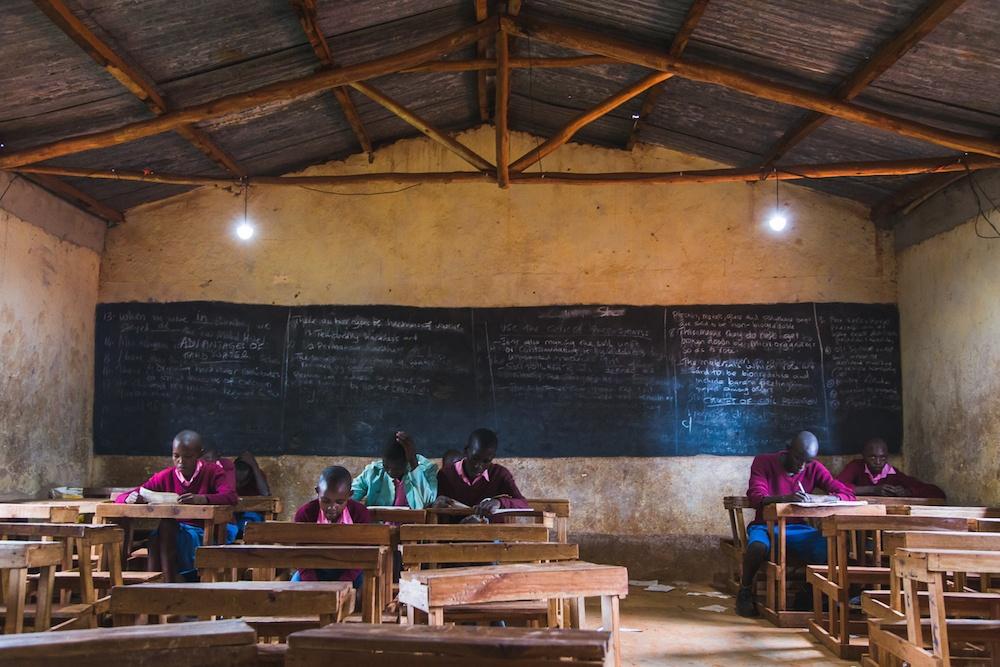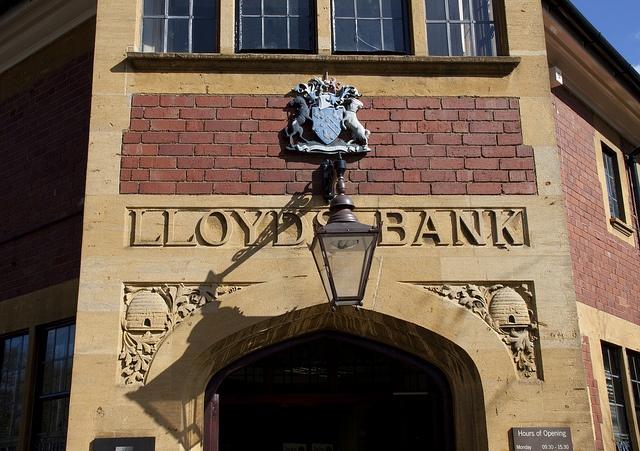The Biggest Mistake (Aspiring) Social Entrepreneurs Can Make


By Solene Pignet
There is one mistake social entrepreneurs (or aspiring social entrepreneurs) very often make. I estimate that 80 percent of social enterprises projects fail because of that mistake.
Yes, you read that right: 80 percent.
I have been providing consulting for social entrepreneurs since 2014, and I have met many (aspiring) social entrepreneurs who make this mistake. This is not very often discussed in the media or in social entrepreneurship resources, so I decided to share it with you in this article.
The No. 1 mistake (aspiring) social entrepreneurs can make is ... to never start
Never getting started is a mistake social entrepreneurs don’t even consider when they start imagining their project. Most think that a bad idea, not enough money or a not-ready market are their biggest risk. When in fact, the biggest risk of all lies in their capacity to take action!
The reason is: Most aspiring social entrepreneurs fear their project will fail.
So, they spend time fine-tuning their business plan; they look for investors; they apply to highly selective accelerators (and shape their progress schedule according to the deadline given by those programs – even if in a few month); they look for co-founders, partners, etc.
In other words, they spend time on doing everything possible except actually getting started. The longer this goes on, the more they start doubting about their idea, or even sometimes doubting about their own capacities. They look at the time and energy spent for little - if not no - results, and end up never starting at all.
In an article published by the Guardian, Matthew Cain -- a former social entrepreneur who experienced failure -- summarize it as follows:
“There’s no correlation between the quality of a business plan and the business, it is revenue that determines the early success of your enterprise. The sooner you are generating revenue the better. Time spent planning often defers discovery. It may get a grant or investment – but persuading an investor is different from persuading a customer to part with their cash."Some startups spend hours choosing the name and perfecting the business model […] Others start trading and see what happens.”
Why is it a common mistake for social entrepreneurs?
The difference between social entrepreneurs and “classic” entrepreneurs is that social entrepreneurs have the ambition to make a difference in the world through their project. They often forget that, even thriving initiatives – like the micro-credit bank of Muhammed Yunus or TOMs one-for-one – actually started small.
Dream big, start small
If “making a difference in the world” is a big, bold, almost unrealistic dream, making a difference in someone’s life is possible. For social entrepreneurs who tackle issues such as hunger, education, health, social integration, gender equality – and so much more – the gap between the big dream and the realistic start is huge.
Sometimes, you have to “quiet your ego” and accept that doing something is already better than doing nothing.
Start by designing and offering a qualitative solution to an important problem, then you will have the market knowledge and growing community of supporters to scale your solution and reach a quantitative impact. In any case, start!
If you have the drive to make a difference in the world, and make it a (even slightly) better place, it is your responsibility to make it happen.
And I am not the only one to think this way:
“Business is such a simple way to solve some problems in our society! And I`m lucky: I live in Europe, I have the education needed and the skills to develop a socially responsible enterprise. And I think it would be absolutely selfish not to do that if you have all these skills,” said Fionn Dobbin, entrepreneur and lecturer at Stockholm School of Economics in Riga. (Extract from an article in Delphi.)
- Imagine if all the young, educated, energetic individuals started making a difference in the world?
- Imagine if all the people who are tired to work for companies whose only ambition is to make money, actually quit their job to create more sense in their career, in their lives, in their communities, and started changing other people’s life?
- Imagine how YOU would feel by making a good living through your entrepreneurial initiative, while doing something good for others?!
Now, imagine you would stop dreaming, and start doing?
Are you planning to start a social enterprise soon?
If you want to make sure your project is part of the 20 percent that actually get started, there are certain traps to avoid.
I will outline six of the most common traps that prevent (even the most ambitious!) social entrepreneurs to get started, during a one-hour live webinar on Sept. 1. If this concerns you, sign up for free here.
Image credit: gratisography/Ryan McGuire
Solène is a globetrotter, committed to sustainable development and passionate about alternative entrepreneurship. She founded Creators for Good in 2014. She provides online consulting services to (aspiring) entrepreneurs willing to make a difference in the world, in order to maximize sustainable revenues AND social impact.
Learn more: www.creatorsforgood.com
APP exits plantations to protect tropical peatlands


Asia Pulp & Paper Group (APP) is committing to retire around 7,000 hectares of commercial plantation areas to protect threatened carbon-rich peatlands, the first time that plantations on tropical peatland have been retired for conservation purposes worldwide.
The land marked for retirement is spread across five individual acacia plantation areas in Riau and South Sumatra which have been identified as requiring immediate rehabilitation following recommendations from the applied research institute Deltares.
The announcement is part of APP’s commitment to establish a science-based landscape approach for best practice peatland management that can be used by the Indonesian Government and plantation companies. It builds on the conservation pledges in the company’s Forest Conservation Policy, which placed an immediate moratorium on all natural forests and new peatland development in February 2013.
Peatland development in Indonesia represents one of the single largest terrestrial sources of greenhouse gas emissions (GHG) in the world. Retiring these plantation areas will help support the Government of Indonesia’s target of a 26% reduction in emissions by 2020, says APP.
Aida Greenbury, managing director sustainability, APP commented: “The retirement of active plantations is not an easy decision for any business to take, but we believe that taking urgent steps to protect remaining areas of peatland forest, as well as reducing and avoiding climate emissions from peatlands, must be a priority. While there is still a long way to go, and we have much to learn, this announcement represents a major breakthrough.”
Greenpeace described the news as a "potential game changer for the future of Indonesia’s peatland landscapes and tangible action to tackle climate change".
Barilla’s onto a good thing with sustainability strategy


Right from the start, the Italian food company Barilla has combined the achievement of economic goals with social commitments to the areas in which it operates. Knowledge of social and economic contexts together with integrity, transparency and innovation, enabled the founders to identify their own entrepreneurial style, and hand it down from generation to generation.
In Barilla the words “sustainability” calls for a unique and distinctive way of doing business: “Good for you, Good for the Planet”. That is, taking simultaneously into account economic, social, environmental aspects through the entire supply chain, in whatever the company does. This is a strong identity that expresses the company’s contribution to the sustainable development of the communities and the Planet, and it is an expression of its scrupulous attention to the quality of the products and processes that are an everyday part of the work of the Group.
“Good for You, Good for the Planet” is the only way that Barilla has identified to grow and doubling its business in the years to come, and through which it aims to strengthen its presence in existing markets and expand into emerging ones. Barilla adopted, as a reference model, the “Double Pyramid” developed by Barilla Center for Food & Nutrition Foundation in 2010. The Double Pyramid is a graphic tool that connects the nutritional features of a food with its environmental impacts. The model shows that foods recommended as the staple food in the Mediterranean diet – like fruits, vegetables, legumes, olive oil and grains, like pasta, standing at the basis of the Food Pyramid on the left– are also the foods with a lower impact on the environment (reflected by the Environmental Pyramid on the right).
Barilla defined its Sustainable Business strategy based on three strategic directions: Good for You, Good for the Planet and Good for the Communities.
“Good for You” means:
- the promotion of healthy lifestyles and sustainable food and the continuous improvement of existing products;
- the launch of new products in line with the Double Pyramid model.
“Good for the Planet” means:
- responsible management of greenhouse gas emissions and water consumption at Barilla factories:
- 100% raw materials purchased applying process which improve sustainability in the supply chain;
- Development of sustainable cultivation in projects for all strategic supply chains.
“Good for the Communities” means:
- Promoting healthy eating education for young people and supporting youth entrepreneurship in the world of food;
- Encouraging access to food and food security;
- Supporting populations struck by natural disasters through the timely provision of emergency food.
Following this way of doing business, Barilla has set these goals for the coming years:
- GOOD FOR YOU: by 2020 Barilla will improve people’s lives by promoting consumer choices in line with the food pyramid.
- GOOD FOR THE PLANET: by 2020 Barilla will offer people only products at the bottom of the environmental pyramid.
- GOOD FOR COMMUNITIES: by 2020 Barilla will promote the inclusion of people through programs for access to food, educational projects and the promotion of diversity.
2015 Highlights
- Since 2012 Barilla has reformulated more than 100 products reducing the fat and salt level.
- In 2014 the Group has reduced respectively salt and fat in 25,000 and 13,000 tons of product.
- Barilla has reduced the CO2 emissions and the water consumption per ton of finished product of 20% compared to 2010 and today 100% of its supply chains have a defined sustainability project.
- Barilla every year donates thousands of tons of finished products to people in need: 2,027 tons in 2014;
- The Group has involved almost 40,000 young people with education projects on food since 2009.
To discover more on Barilla new GRI G4 Report and its digital dedicated platform, click here.
Wild Maine Blueberries Combine History and Ecotourism


When the glaciers receded from Maine after the last ice age, blueberries were one of the first plants to populate the landscape. Wild blueberries can grow in highly acidic soils, where few other crops flourish. Native Americans started burning the fields, to discourage weed growth, giving the blueberries full sun and have been harvesting them for 1,000 years. Globally, Maine is now the largest producer of wild blueberries and produces 10% of the nation's blueberries, including both wild and cultivated crops.
Following in their footsteps, modern Mainers are maintaining these fields, creating a unique ecotourism opportunity to harvest this crop in the middle of the summer on U-pick farms. For a few short weeks, Maine visitors can take part in this tasty local tradition, that is deeply embedded in Maine's history.
My family went blueberry picking this week at Staples Homestead in Stockton Springs, Maine. This organic farm has been in operations since 1838 and is family run, with members there to greet us and provide metal rakes. Because they are low-bush blueberries, a rake is an easy way to scoop and pour the blueberries into boxes or a bucket. Even the younger members of group were able to rake, but they often took long munching breaks.
The homestead cultivates a few varieties of wild blueberries. They weren't planted, however the fields are maintained for ideal growing conditions. This is important for producing higher yields. For example, if blueberries grow in the forest where the plants are shaded, they produce little if any fruit.
Blueberry plants grow in a 2-year production cycle. The first year is dedicated to vegetative growth. The second year is for pollination and fruit bearing. Two to four beehives per acre are commonly brought in to supplement the work of native pollinators and help boost yields. With a short two to four-week window to harvest the crop, migrant farm workers often assist in the process.
Wild blueberries are smaller in size than cultivated varieties, and have wider variation in color and flavor. Their high skin-to-pulp ratio makes them more antioxidant rich as well. These indigenous blueberries grow exclusively in Maine and Eastern Canada on large stretches of barrens.
After the harvest, fields are mowed or burned, and the cycle begins again. Although burning has been a common practice, pruning is growing in popularity because repeated burning can result in a declining harvest. Conversely, burning can kill some common pests, which can assist in pest management.
There are 44,000 acres of wild blueberries in production in Maine, with half being available for harvest in a given year. Coastal Maine boasts the largest production, with lower concentrations inland.
There are several features that make wild blueberries a sustainable food option. Because the fruit is wild, it hasn't been genetically modified. With blueberries flourishing with a pH level of 4, they grown on soils that would probably otherwise be considered unfit for agricultural production without amendments. Winter snow cover, the amount of precipitation, the prevalence of pests, lack of damaging frost, and rates of pollination all impact the harvest size and quality.
The blueberry fields require little fertilizer use, and are a low-input crop, and many wild blueberry are grown on small to mid-sized farms. Research has revealed the impressive nutrient density and antioxidant value of wild blueberries, helping to fuel demand.
The blueberry harvest is the talk of the town and a source of pride in Down East Maine each summer. An August visit to coastal Maine is sure to be filled with fresh blueberries and slices of blueberry pie. Town populations temporarily expand as farm workers come in for the harvest and visitors gather at the Machias Wild Blueberry Festival this weekend.
Image Credit: Sarah Lozanova
SolarCity’s New GivePower Foundation Brings Light to Schools in Need


It's been going on quietly, behind the scenes, for five years now. SolarCity's board chairman, Elon Musk, said back in 2010 that the company needed to get involved in disaster relief and to give as it grew.
SolarCity employees went down to a town called Coden, Alabama, in the aftermath of the Gulf oil spill to set up a solar system, with battery storage, at the coastal response center for the South Bay Communities Alliance. People had lost their jobs when the area was closed for fishing. It became a community gathering place. The company did the same thing after Fukushima, then Hurricane Sandy in New York and New Jersey.
When Hayes Barnard joined the company in 2013 as chief revenue officer, he pushed to formalize this. It became the GivePower Foundation soon afterward with Barnard as its president. This week, the foundation was granted 501(c)3 status by the IRS and is now a public charity. The kick-off was celebrated with a $500,000 donation from Bank of America, a key financing partner.
We spoke by phone with Barnard, along with Jonathan Bass, SVP of communications for SolarCity, about the announcement. They explained that a big part of this is about stakeholder engagement. The foundation allows partners and employees to get more involved in the spirit of giving while growing to, in Bass’ words, “tap into meaning, while connecting our hearts around a common cause.” The company sends select employees out on field trips in groups as part of their recognition program which “is far more meaningful and transformative than traditional incentive trips.”
After all, said Barnard, “when you’re increasing employee headcount by more than 500 employees every single month, you have to find a way to inspire them.”
Customers or the general public can get involved as well, should they choose to, through the Solar Ambassadors program or on the foundation website.
When Hayes took a trip to Mali and saw the impact of what donating renewable power could do, that was when he had the vision for the foundation.
“What we wanted to do was first, leverage the company’s infrastructure with residential solar, and then, to find a way to get our partners, as well as our employees involved.”
GivePower wants to focus on schools because there are 291 million children around the world who go to schools without electricity. Its commitment is to provide power to one school for every megawatt of solar SolarCity sells. Last year, the foundation provided power to 511 schools. This year, given the company's sales target of 1 GW, it expects to instal panels on 1,000 schools. Barnard will head to Nepal shortly to install solar on 200 schools there.
The power is there primarily to provide lighting, which has been shown to improve student performance. It also allows for adult literacy programs in the evening, and often turns the schools into community gathering spaces.
The plan calls for the foundation to bring light to remote villages in Mali, Nicaragua, Kenya, Haiti, Uganda, Nigeria, Malawi, Nepal and Ghana. Worldwide, 1.3 billion people have no access to electricity.
“Education is vital to empowering communities and forming tomorrow’s leaders, and we are excited to play a role in ensuring these schools have lighting for the first time,” said Anne Finucane, vice chairman and global chief strategy and marketing officer at Bank of America. “Our new partnership with GivePower Foundation is bringing clean energy to the developing world and is part of our broader strategy to help finance the transition to lower-carbon economies.”
Image courtesy of SolarCity
Major U.K. Bank Bans All-Male Management Shortlists


British banking is in for a change.
Lloyds Banking Group is known in the U.K. for its support for gender and ethnic diversity. Its sponsorship of the Breakthrough Network and Women of the Future Ambassadors Program have helped to set the bar when comes to increasing diversity in the British financial sector.
But last month the banking group took its commitment to women's rights a step further: It banned all-male management shortlists.
According to the Wall Street Journal's blog, Moneybeat, Lloyds issued a directive to its outsource recruitment contractor, Resource Solutions, that "a minimum of one-third of your total submissions must be made up of suitably qualified female candidates." The change affects all lists of applicants for positions of assistant vice-president and above, and it takes place immediately.
According to 2014 data shared by the banking group, only 23 percent of its board members are women. The percentage of female senior managers is only a few points better, at 29 percent. To counter that statistic, Lloyd vowed last year to increase the proportion of women in its 8,000 management positions. Its goal is 40 percent by 2020 and 31 percent by the end of this year.
Moneybeat and U.K. lawyers point out that giving preferential treatment to female candidates in order to reduce the inequity in ranks may bring employers "into uncharted territory" when it comes to employment laws. The employer would be expected to be able to show that all candidates had equal qualifications for the job.
But Arpita Dutt, a partner at the legal firm Brahams Dutt Badrick French LLP, said the new requirement was legal under British law if the move was meant to correct a shortfall that came from under-representation.
“Lloyds may well have identified that a cause of the disadvantage arises at the initial shortlisting stage,” Dutt said.
Lloyds is also not the only corporation in the U.K. financial sector to take steps to increase gender diversity in its business. According to one recruiter, some private equity firms had actually resorted to women-only shortlists, a practice that is illegal under U.K. law. Only 19 percent of investment banking positions and 21 percent of asset management jobs are held by women in the U.K. Some equity firms have yet to introduce gender diversity to their upper-level investment teams.
Still, it's clear that the concept of gender diversity is still a new -- and somewhat unsettling -- idea in the British Isles. Last year the Telegraph's deputy editor, Louisa Peacock, expressed concerns that gender diversity might become the scapegoat for the failure of an iconic British institution if it ran into financial trouble, some five years after the corporation's massive bailout.
"I just hope female bankers won't be blamed if Lloyds goes belly up," she wrote. It's a fear that today seems unreasonable here in North America, but is still a sign of the changing perspectives toward gender diversity.
Image credit: Tony Hisgett
Uber's Unethical Astro-Turfing: A Sign of Things to Come?


Companies that resort to 'astro-turfing' – artificially building faux-grassroots movements to push a corporate-friendly agenda -- are nothing new. Exxon-Mobil's longtime funding of climate-change deniers and the smoking industry's use of false science to hide the negative effects of tobacco are just two examples of how companies manipulate the public debate to increase their own profits. Other companies have been known to hire fake protestors, spend millions on “grassroots” organizing and hire actors to appear as concerned citizens in advertising.
Technology, though, is changing how companies interact with customers and providing a way for companies to directly interact with users. Uber, this past month, took advantage of its customers in New York City through misinformation and fear tactics.
Uber leveraged the power of its app to prompt a social-media assault. The company added a “de Blasio’s Uber” feature so that every time New Yorkers logged on to order a car, they were reminded of the mayor’s threat to cap the number of Uber vehicles (with a message reading “NO CARS — SEE WHY”) and were sent directly to a petition opposing the new rules.
The result? Around 17,000 messages sent to New York City Mayor Bill de Blasio. For what? Uber wants the freedom to pick up as many people as it can in New York City without having to follow the same rules and regulations as New York taxicabs. Even though it is a multibillion-dollar company that's far, far bigger than any taxi company (many of which are independently-operated small businesses), Uber painted itself as a victim and told users to fight back against “special interests,” despite all the evidence that the biggest special interest in this fight is ... none other than Uber itself.
This manipulation shouldn't surprise anyone, because Uber is, by nearly most measures, a company that ranks horribly on most corporate responsibility measures. It spends heavily on lobbying against regulations, resists tooth-and-nail any attempt to be help accountable for the actions of its workers, and doesn't have any corporate foundation to speak of.
Uber has a charity page – but it is sparse, has no real focus, and is aimed more toward getting people to use its app for rides to events, like San Francisco's Gay Pride Festival, rather than providing real assistance to worthy causes.
Instead of trying to work with taxi drivers, many of whom have been adversely affected by the rise of Uber, the ride-sharing company demonizes them with websites and targeted messaging. Now, through its app, Uber is trying to put its users against taxi drivers and city officials under the veil of “freedom” and “access.”
The irony of riders taking action in support of a $50 billion company aside, this is worrisome for many reasons. Firstly – there are many causes out there that are worthy of civic engagement, many of which we cover right here at TriplePundit: climate change, drought, human rights. New York City, where Uber's astro-turfing took place last week, is facing huge challenges with regards to police brutality and racial profiling. By focusing the attention of its users, and the media, onto an issue that only benefits itself, it is diverting the potential of technology to spread awareness of the real challenges facing New York City.
Uber is a ride-hailing app, and nothing more. By manipulating its users to supporting a cause that benefits itself, Uber is showing its true colors. In a world where we need more people to act on genuine issues, and where technology can help engage people on those issues, Uber is pointing its app backwards, using it for the same purposes that Big Tobacco did back in the 1960s and '70s -- profits. That is why the company added features that allow users to interact with Mayor de Blasio -- but good luck finding a way to contact Uber.
The worst part? It worked. Uber was able to get New York City to delay regulations that would have adversely affected its business: a dangerous precedent for app users everywhere.
Image credit: Jason Tester
How Smart Cities Enable Urban Sustainability


By Anum Yoon
Everything is becoming 'smart' these days, from smartphones to smart watches and more. There's a reason for it.
For the most part, converting something into what we call "smart" means performance enhancements and better optimization. For example, smartphones allow us to do a whole slew of things on the go that we used to need a computer for. You can shop, browse the Web, answer and send emails, and much more.
It makes sense that the world around us would eventually evolve to incorporate modern technology, just like with our mobile phones. What better place to start than a fast-paced city? There is such a thing as a smart city, and more own cities across the country are making the conversion to this model.
What is a smart city?
A smart city, or connected city, uses modern digital technologies to improve the overall quality of life and performance. In addition, this allows for reduced operation costs and better communication and engagement with citizens.
Key sectors, or areas that can be improved through technology, include transportation, energy, health care, water and waste.
The idea is to leverage modern and useful tech to create a sustainable and self-aware city. This would allow it to do many things like direct traffic, notify residents about available parking and reduce gas emissions.
Climate change has been a significant factor in the push for smart cities, in the hopes that enhancing our highly populated urban areas will allow reduced environmental hazards like gas emissions and waste production.
What does a smart city look like?
Smart cities are relatively new in terms of the human timeline. Modern cities -- devoid of 'smart' technology -- represent a large majority of the world's GDP, as well as its waste production and resource consumption. For all intents and purposes, they are a large drain.
That's why these large population centers need to be reinvented to become more efficient and sustainable over time, lest they burst at the seams. The idea behind a smart city is to reduce this drain on society, eliminating a city's consumption footprint or mitigating it entirely.
A proper smart city should be able to do the following:
- Recognize and identify its context and local impact
- Offer an abundance of raw materials, a sustainable agricultural ecosystem, free crop pollination and genetic diversity
- Be resilient to long-term changes and adapt to conceptualized data
- Employ high-tech 'smart' devices, sensors and low-tech biomimetic designs to improve operation and life within
- Have zero footprint when it comes to water consumption, by recharging water supplies through modern recycling systems or rainwater collection (such systems should be implemented even as part of basic plumbing standards)
- Minimize citizen consumption by allowing them to optimize the emission of greenhouse gases, cutting back their reliance on destructive living
- A general shift that favors efficient building design, decentralized generation, green transportation and modes of travel, sustainable energy systems, and green living
How can smart cities enable sustainability?
The concept behind a smart city is simple, the application not so much. Think about it: The more information we know about something, the better off we are. We can make informed decisions — more accurate decisions —and enact change to improve performance and operation.
When applied to a city, the more self-aware, or 'smart,' a city is, the more we can engage with it. It relates directly to big data and modern tech. One of the more recent trends is leveraging big data to solve problems.
For instance, let's say a city was outfitted with the technology to streamline traffic. By knowing where all of its citizens are at a given time, and where traffic is the heaviest, it can direct others appropriately (think: a GPS system that actually connects directly to an urban network to update accident locations, congestion info and more).
From the outside, this may not seem like it does anything more than improve commute times, but in the grand scheme it improves nearly everything about that city. It cuts down on emission ratings, as vehicles spend less time on the roads. It cuts down on commute times, yes, but that also reduces the risk for accidents. It also reduces fuel consumption and saves money.
Really, the list could go on and on. So, you see, even just a simple system such as that can help improve the quality of life for a city's residents along with performance.
Yes, but what about sustainability?
The concept of smart cities might be difficult to understand, so I'll break it down further. By leveraging modern tech, a smart city can do much more than just help you find a closer parking space or hail a taxi.
Technology implemented in a smart city can improve sustainability in many ways -- for instance, with public transportation. All Aboard Florida is a great example of modern tech improving sustainability. It is an environmentally-friendly railway in the state of Florida that will improve transportation for all areas it covers. While building, it leveraged big data, or 'smart' data, to reduce vibrations and noise, monitor cultural effects and resource consumption, reduce fuel costs and consumption, and discern the impact on air and water quality in nearby areas. The state will also be able to accurately monitor how the railway affects transportation and commute times
A smart city could also do things such as measure water levels, average consumption and weather patterns — like a drought — to help us better manage our supply. It could even track waste patterns to help us optimize recycling and cut back on the amount of waste we use as a society. Both of these scenarios would require the smart city to constantly monitor activities and collect data. All of that data is what we refer to as 'big data,' and it's what would allow the city to be sustainable and react.
Hitachi is working on a project called Social Innovation that will utilize IT and infrastructure technologies to drive business and make smart cities safer. Through the use of big data, the system will be able to react to an event happening around the city in a more fluid manner. Think: The system will alert law enforcement when subway platforms are too overcrowded -- thanks to unique sensors -- and the police can react by sending additional transportation to alleviate the crowds. This would not only improve commute times, but also keep a large majority of people safe, avoiding unnecessary accidents.
As for the matter of privacy, when it comes to collecting that big data, that's another story entirely.
For now, I'll just close out with this: As our cities become 'smart,' our lives will improve significantly, because a more sustainable, more aware city means better living conditions and experiences for all.
So, how do we get there?
To be perfectly honest, as promising as this all sounds, our cities are not going to become smarter overnight. It takes time to adapt the technology needed for smart cities and put it into place. Furthermore, it will take just as long to conceptualize collected data and understand how it can be used in the grand scheme. Once active, this technology will constantly be recording and measuring data, and it's going to take a lot of manpower to analyze it and filter it properly.
It's also going to require reform in terms of development. Citizens of these cities will need to be willing to support large-scale projects, particularly when it comes to transforming the area so that it's smarter and more efficient. Older, run-down buildings will need to be replaced with ones that implement modern technologies. It's not just about buildings though -- other city utilities and services count, too. It could include anything from storm-water drains, to dams or public structures.
Bland, open rooftops could be transformed into energy-producing and sustainable areas with solar energy. City streets could become aware of foot and vehicle traffic and alert the proper authorities when issues arise. Plumbing systems could be designed to collect rainwater and filter it for public consumption. The possibilities are truly endless.
The trick of it all is updating existing technologies, structures and strategies to incorporate new, smarter and more efficient ones. That is simply going to take time. If you support such a thing, be sure to vote with your wallet and time when you can.
But just as long-term solutions and big pictures are important, so are the daily habits and life choices of individuals. Rather than people disengaging from sustainability because they cannot provide the whole solution, individuals should realize the value of engaging through small steps. Changing a habit, like how you wash dishes, or making long-term sustainable choices, like investing in a greener kitchen, are individual efforts that add up.
Image credits: Port via Life of Pix
Anum Yoon is a writer who is passionate about personal finance and sustainability. She often looks for ways she can incorporate money management with environmental awareness. You can read her updates on Current on Currency.
Pope Francis Is Right on Climate Dangers, Wrong on Policy Options


Editor’s Note: This post is an excerpt from the University of Wisconsin Sustainable Management blog.
By Michael E. Kraft
In June, Pope Francis released a remarkable encyclical on “care for our common home,” the Earth. He called climate change a “global problem with grave implications,” and described our response to date as woefully inadequate. He called for aggressive efforts to reduce reliance on greenhouse gas-emitting fossil fuels and to promote cleaner and renewable sources of energy.
Adding moral dimension to the debate
The pope also offered a broad overview of how human actions are affecting the planet, and particularly the lives of the poorest among us, who are likely to suffer the most from a changing climate and environmental deterioration. His statement comes less than six months before the major international meeting in Paris in December, when the world’s leaders are to draft the next international climate change treaty.
The unique contribution that Pope Francis made to this debate was to add a strong moral dimension to the prevailing scientific and economic discussions of climate change and the environment. He highlighted humanity’s pursuit of continued growth in material consumption at the cost of planetary health and human well-being, which he found to be morally reprehensible.
Where the Pope went wrong
The pope was right to call for a more ethical sustainable development that can meet our economic needs while also protecting the environment. He was wrong, however, to fault reliance on economic incentives as a way to deal with climate change.
Most climate experts favor either a tax on carbon emissions or reliance on a market system for trading carbon permits, with a cap that declines over time. Both mechanisms seek to put a substantial price on carbon emissions as an effective way to change individual and corporate behavior in a market economy.
Pope Francis argues that markets often fail to bring out the best in us, and he is right about that. Yet moral injunctions alone cannot move societies toward a low-carbon future. Markets might just do that. The higher price of carbon-based fuels should discourage their use, promote the search for alternatives, and stimulate energy efficiency and conservation.
Such policies rely on market mechanisms that conservatives applaud, which makes bipartisan cooperation possible. Moreover, the Citizens Climate Lobby and others promote a revenue-neutral carbon tax with no net increase in taxes. Such a policy can be used in conjunction with actions such as setting national renewable energy goals, offering financial incentives for switching to non-carbon energy technologies, and establishing new regulatory standards.
Climate change policy gaining traction in U.S.
As is the case with most public problems, we can agree on the need to do something without necessarily agreeing on which policy alternatives are likely to work best or be cheapest. However, it is imperative to recognize the seriousness of the problem, and Pope Francis’s encyclical did exactly that by endorsing the scientific community’s findings that climate change is both real and hugely important.
In the U.S., the Obama administration is committed to adoption of a strong international treaty at the Paris meeting. Consistent with these goals, it has raised fuel efficiency standards, supported renewable fuels, and moved ahead with EPA’s Clean Power Plan. That plan will lower carbon emissions from existing coal-fired power plants and promote alternative fuels while giving each of the 50 states sufficient time and choice in deciding how to act.
Some states, most notably California, are embracing the challenge of climate change and setting ambitious goals for reducing carbon emissions. California is aiming for 50 percent reliance on renewable energy by 2030. It is convinced that this will help, not hurt, its economy. Unfortunately, many other states are doing little to change directions.
Recent surveys show that an overwhelming majority of the American public now supports action on climate change. They agree with Pope Francis. The issue remains low in salience. However, these polls indicate that political leaders can indeed garner public backing for tackling climate change.
Image credit: Flickr/Gaspar Sarrano
Michael E. Kraft is a University of Wisconsin Master of Science in Sustainable Management faculty member and professor emeritus of political science and public and environmental affairs at the UW-Green Bay. Michael wrote this guest post; the views expressed are his own.
Ikea Eliminates CFL Light Bulbs


We all realize that greenhouse gases are causing climate changes. Most of us want to help combat climate change in some way, and there is an easy way for us to do so. Switch to LED light bulbs.
One company, Ikea, is making it easy to only buy LED lights. By Sept. 1, it will only sell LED light bulbs and lighting, the retailer announced on Monday. The announced fulfills a commitment Ikea made in 2012. Since 2013, the retailer's U.S. customers purchased 7.6 million LED bulbs, collectively saving almost $3 billion in energy costs.
The announcement also marks Ikea's move away from the LED's energy-sipping cousin, the compact fluorescent (CFL) bulb. While CFLs last longer than incandescents and use less energy, LEDs perform even better while avoiding mercury woes.
“LED is a light revolution,” said Steve Howard, chief sustainability officer for Ikea Group, in a statement. “With household electricity bills continuing to rise rapidly and global energy consumption increasing, the LED lighting will have a big impact. Building on our belief that everyone should be able to afford to live more sustainably at home, we will make sure our LED prices are affordable for the many.”
The basics of LEDs
How much do most of us really know about LEDs? Did you know that LED stands for light-emitting diodes? They are semiconductor devices producing visible light when an electrical current passes through them. LEDs are more efficient, durable and versatile compared to incandescent bulbs, while using 85 percent less energy.
If 1 million people swapped just one light bulb for an LED, “this would be equivalent to taking 6,700 cars off the road or planting 17 million trees per year,” said Lars Petersson, Ikea U.S. president. The widespread use of LEDs could save about 348 terrawatt-hours of electricity, the Energy.gov website states. That is the equivalent of the annual electricity output of 44 large electric power plants and amounts to a savings of over $30 billion at current electricity prices. In other words, ditching conventional light bulbs can have a real impact on the environment.
Did you know that the use of LEDs by Americans is increasing? Ikea U.S. conducted studies in both 2012 and 2015 and found that consumers are more open to buying LED bulbs and lighting. In 2015, 64 percent of Americans bought at least one LED light bulb, compared to 49 percent in 2012. In 2015, 51 percent of Americans bought several LED light bulbs, compared to 39 percent in 2012.
There is room for more education concerning LED lighting, the Ikea studies found. A whopping total of 68 percent of Americans in 2015 didn’t know that LED bulbs can last an average of 20 years, and 34 percent didn’t know that LEDs use less electricity than other types of light bulbs.
Image credit: Flickr/Anton Fomkin